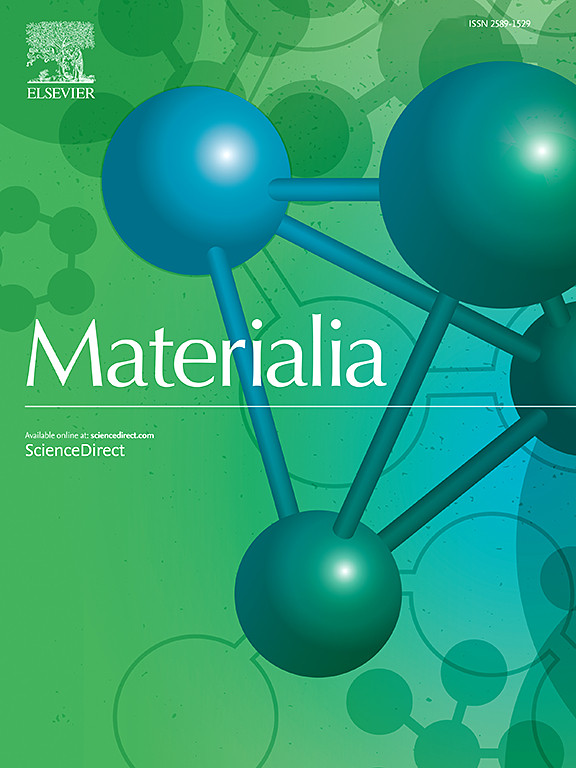Optimization of selective laser sintering process parameters for phenolic thermoset composites using X-ray CT analysis
IF 3
Q2 MATERIALS SCIENCE, MULTIDISCIPLINARY
引用次数: 0
Abstract
Selective Laser Sintering (SLS) is a versatile additive manufacturing technique known for its ability to produce complex and intricate geometries without support structures using various materials. However, achieving the desired isotropic mechanical properties and dimensional accuracy remains challenging with existing thermoplastic polymers. To address these challenges, thermosetting polymers are found to be a suitable option owing to the formation of strong interlayer covalent bonding in three-dimensional (3D) molecular structures at lower temperatures (∼70–80 °C). This study investigates the SLS processing and optimization of phenolic thermoset composites using X-ray computed tomography (XCT) analysis. Phenol-formaldehyde (PF) thermosetting powder was formulated with organic/inorganic fillers and Polyamide 12 (PA12) in five different weight proportions (10wt %-50wt %). XCT was employed as a non-destructive characterization tool to analyse the internal material structure and porosity in the SLS-fabricated samples. By systematically varying the process parameters, mainly laser power and scanning speeds, insights into the effect of these parameters on powder consolidation and porosity are gained. Advanced image processing techniques are utilized to quantify pore size and distribution within the microstructure of printed parts. The XCT-generated porosity data and flexural mechanical strength resulted in 30/70 PA12/PF as an optimal composition (at 8 W laser power and 250 mm/s scan speed) and demonstrated the multi-stage post-curing reduces porosity by 8–10 % while improving flexural strength by 14–16 % due to enhanced crosslinking and formation of interpenetrating polymer network structure. This non-destructive optimization approach elucidates the relationship between process parameters and part quality of SLS 3D printed phenolic thermoset composites, proposing strategies to enhance the performance and reliability of manufactured components for various high-performance applications such as aerospace, biomedical, and energy fuel cells.

基于x射线CT分析的酚醛热固性复合材料选择性激光烧结工艺参数优化
选择性激光烧结(SLS)是一种多功能的增材制造技术,以其能够在没有支撑结构的情况下使用各种材料生产复杂和复杂的几何形状而闻名。然而,实现期望的各向同性力学性能和尺寸精度仍然是现有热塑性聚合物的挑战。为了解决这些挑战,热固性聚合物被发现是一个合适的选择,因为在较低温度(~ 70-80°C)下,在三维(3D)分子结构中形成了强的层间共价键。本研究利用x射线计算机断层扫描(XCT)分析研究了酚醛热固性复合材料的SLS加工和优化。用有机/无机填料和聚酰胺12 (PA12)按5种不同的重量比例(10wt %-50wt %)配制酚醛热固性粉末。采用XCT作为非破坏性表征工具,分析了sls制备样品的内部材料结构和孔隙率。通过系统地改变工艺参数,主要是激光功率和扫描速度,深入了解这些参数对粉末固结和孔隙率的影响。利用先进的图像处理技术来量化打印部件微观结构中的孔隙大小和分布。xct生成的孔隙度数据和弯曲机械强度表明,30/70 PA12/PF是最佳组合(在8 W激光功率和250 mm/s扫描速度下),并且由于增强交联和形成互穿聚合物网络结构,多级后固化减少了8 - 10%的孔隙度,同时提高了14 - 16%的弯曲强度。这种非破坏性优化方法阐明了SLS 3D打印酚醛热固性复合材料的工艺参数与零件质量之间的关系,提出了提高各种高性能应用(如航空航天、生物医学和能源燃料电池)制造部件的性能和可靠性的策略。
本文章由计算机程序翻译,如有差异,请以英文原文为准。
求助全文
约1分钟内获得全文
求助全文
来源期刊

Materialia
MATERIALS SCIENCE, MULTIDISCIPLINARY-
CiteScore
6.40
自引率
2.90%
发文量
345
审稿时长
36 days
期刊介绍:
Materialia is a multidisciplinary journal of materials science and engineering that publishes original peer-reviewed research articles. Articles in Materialia advance the understanding of the relationship between processing, structure, property, and function of materials.
Materialia publishes full-length research articles, review articles, and letters (short communications). In addition to receiving direct submissions, Materialia also accepts transfers from Acta Materialia, Inc. partner journals. Materialia offers authors the choice to publish on an open access model (with author fee), or on a subscription model (with no author fee).
 求助内容:
求助内容: 应助结果提醒方式:
应助结果提醒方式:


